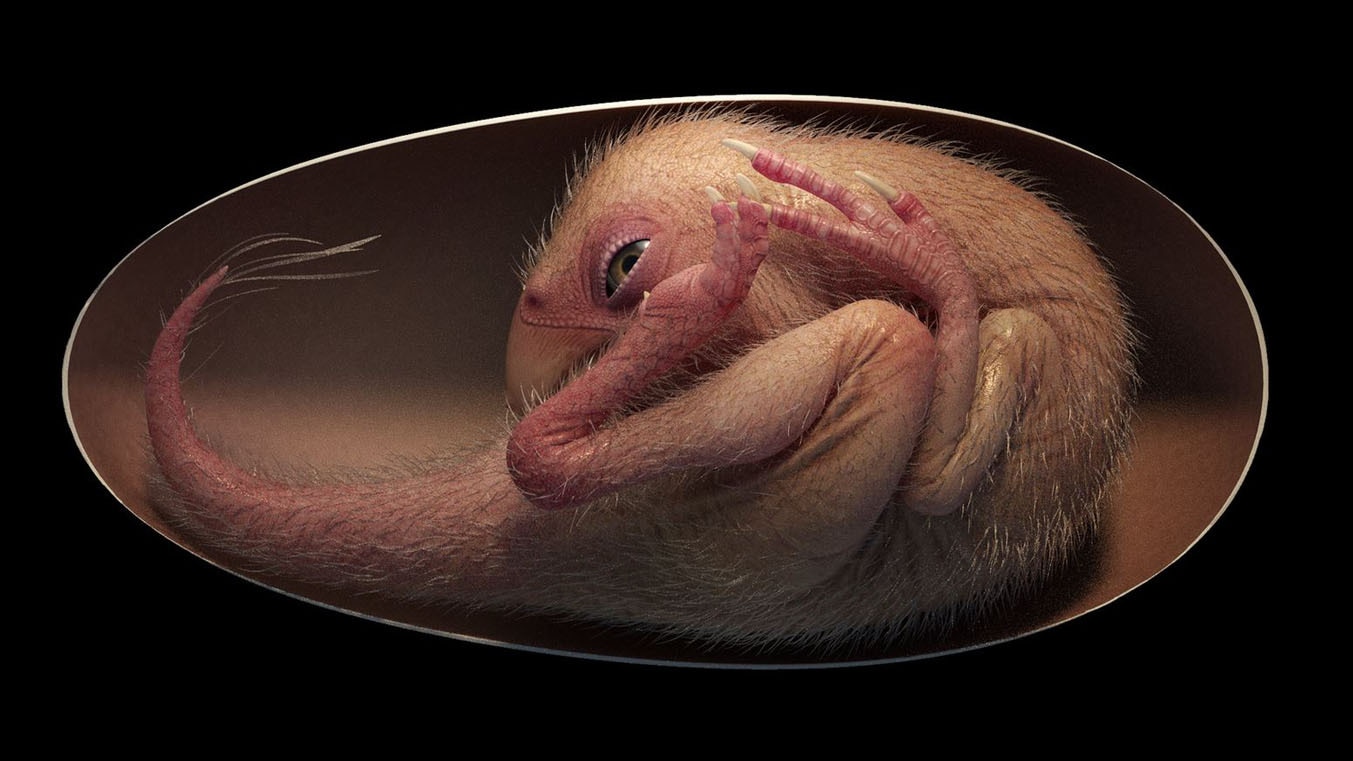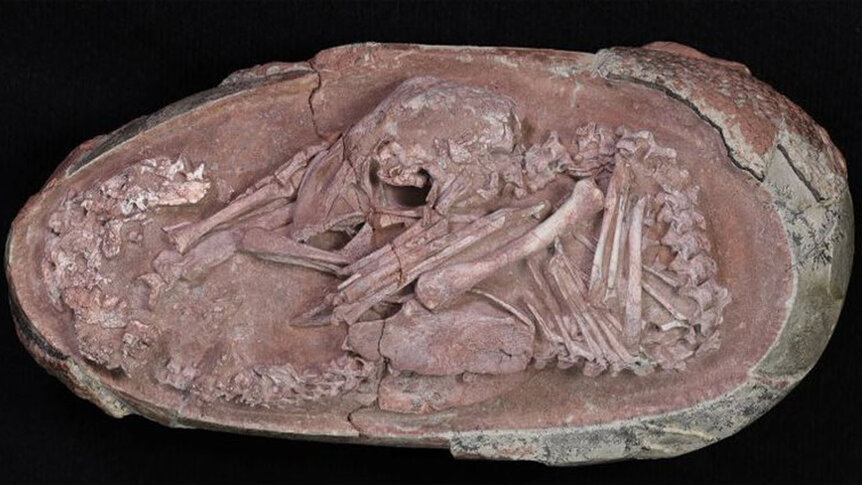Create a free profile to get unlimited access to exclusive videos, sweepstakes, and more!
Dinosaur embryo frozen in time looks like it just fell asleep
Never to hatch, the oviraptor embryo now nicknamed “Baby Yingliang” reveals bird and dinosaur similarities.

While dinosaur fossils are scattered everywhere on Earth, it is particularly rare to find the embryo of a dinosaur in any decent state of preservation. This one almost looks as if it just fell asleep.
Never to hatch, the oviraptor embryo now nicknamed “Baby Yingliang” (after the Yingliang Stone Nature History Museum in Xiamen, China) fossilized so amazingly that you would almost think it was alive. Most dinosaur eggs and embryos ended up getting crushed by thick layers of mud and sediment. Their delicate bones couldn’t hold up to pressure or spending millions of years underground that well, which is why Baby Yingliang is such a fascinating find.
Oviraptors were toothless, beaked, and feathered dinosaurs that were kind of like a mashup between a bird and a reptile, and even brooded over their eggs. They have even been called “chickenosaurs” for those reasons. Feathered dinosaurs are nothing new, and neither is the fact that birds are the only direct descendants of dinosaurs that have survived up until now. What Baby Yingliang has revealed is that embryonic dinosaurs curled up in a posture eerily similar to the embryos of chickens and other birds. It was almost ready to break out of the egg.
“The head lies ventral to the body, with the feet on either side, and the back curled along the blunt pole of the egg, in a posture previously unrecognized in a non-avian dinosaur, but reminiscent of a late-stage modern bird embryo,” said a team of researchers, led by Lida Xing, in a study recently published in iScience.
So the posture of bird embryos apparently goes back millions of years. While the species around today might have not existed back then, the same posture in the egg was apparently passed down because it must have been successful. It is now thought to have evolved from non-avian theropod dinosaurs, from which the first avian dinosaurs emerged, which were the ancestors of extant birds. Evolution tends to favor what succeeds. For modern bird embryos, the posture, known as “tucking,” is necessary for them to hatch without a problem.
Baby Yingliang’s back is, as seen in Xing’s rendering and the actual photo of the fossil, curled against the wider end of the egg. The head is below the body with feet on either side. When this fossil was compared to other dinosaurs closely related to oviraptors, it was determined that somehow these dinosaurs, which were about the size of ostrich, developed birdlike postures when they were in their final embryonic phases. This position is controlled by the central nervous system, so the dinosaur’s brain must have been awake before it even breathed.
It was previously thought that the way bird embryos behaved in the egg was unique to birds. Obviously, a dinosaur that hasn’t been around since the Cretaceous period just disproved that. This isn’t the first time something thought to be unique to birds was found in non-avian theropods. When it comes to breeding, oviraptors are thought to have exhibited some birdlike behaviors and morphologies, and some that were closer to those of reptiles. Fossilized eggs have told us much of what we know about reproduction and nesting in dinosaurs.
“Among all Mesozoic dinosaurs, oviraptorids currently have the best record of embryonic fossils, although still only a handful of specimens are known,” the researchers said.
This tiny dinosaur may have never known what it was to be alive, let alone famous, but an oviraptor that could fit in your hand is now breaking the internet.



























